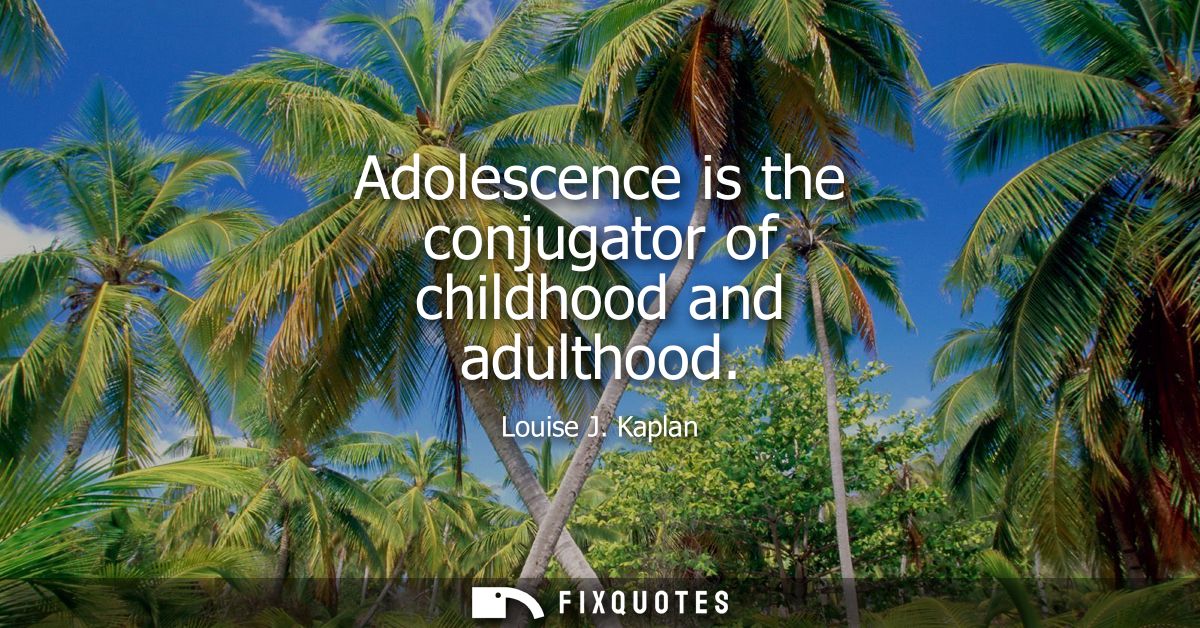"Adolescence is the conjugator of childhood and adulthood"
About this Quote
Adolescence functions as the crucial bridge between the dependent world of childhood and the autonomous realm of adulthood. It acts much like a verb conjugator in language, transforming the static base of early life into the fluid, active experiences of maturity. Just as conjugation links the infinitive form of a verb to its various tenses and voices, adolescence reshapes the identity and capacity of an individual, preparing them for the different roles they'll embrace later in life. Childhood is marked by innocence, reliance, and simplicity, while adulthood brings responsibility, independence, and complexity. The adolescent period fuses these two worlds, often in tumultuous and unpredictable ways.
This transitional stage is characterized by profound psychological, emotional, and physical change. It is a time of experimentation, confusion, and self-discovery, where the boundaries of one’s former self are tested and expanded. Adolescents draw upon the stories, beliefs, and habits of their youth, but they are also compelled to confront new expectations, choices, and freedoms. The process is neither linear nor uniform; each young person experiences their own unique blend of resistance, adaptation, and compromise as they come to terms with their evolving place in the world.
Much like the linguistic process of conjugation that allows for richness and nuance in expression, adolescence provides the opportunities and challenges that mold an individual’s sense of self. It is where ideals are examined, values are questioned, and dreams are formulated. Through struggle and adaptation, the adolescent incorporates both the innocence of childhood and the foresight of adulthood, ultimately emerging with a more coherent and resilient identity. Without this intermediary phase, the progression from childhood to adulthood would not only lack depth but also the subtlety required for a mature human experience. Adolescence, therefore, is essential for personal growth and the meaningful integration of past and future selves.
More details
About the Author
